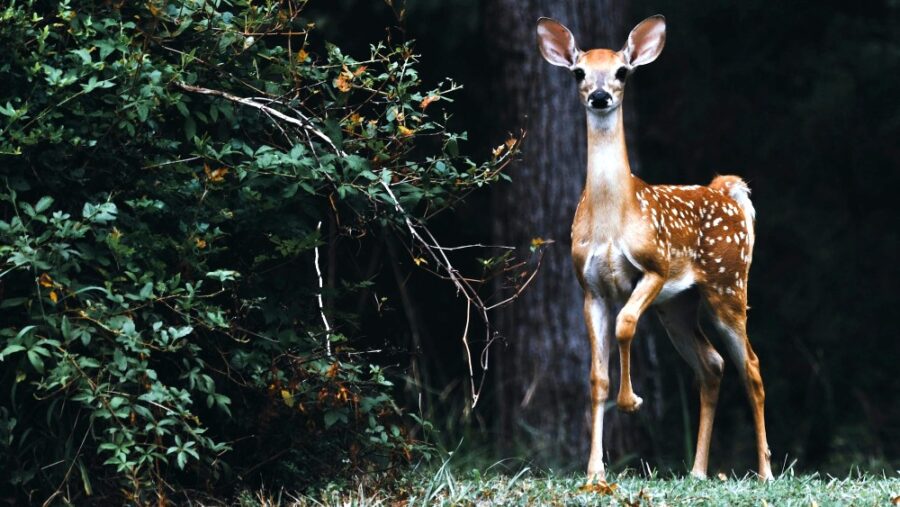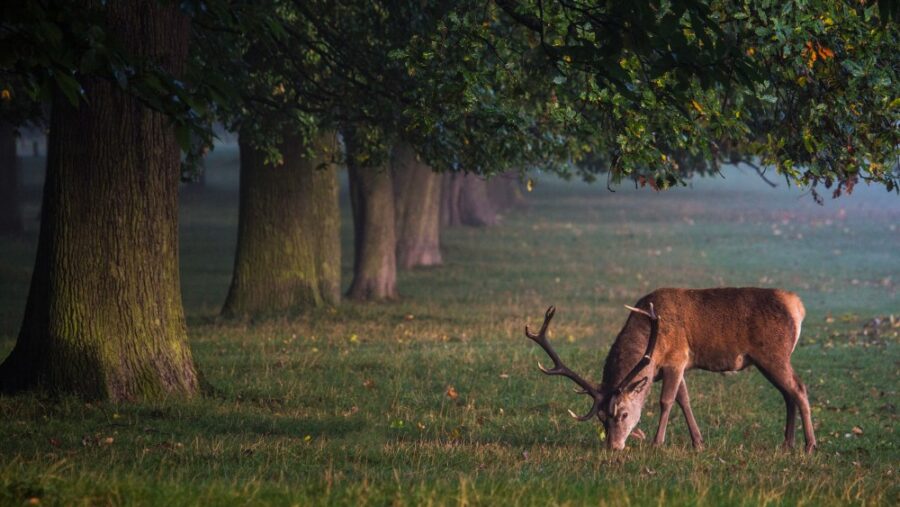Zombie Deer Disease Gets Worse, Scientists Fear Spread To Humans

As 2024 approaches, here’s some new information to carry a fresh batch of fear into the New Year. Scientists are warning that we may be on the brink of a new mad cow-like disease that’s targeting the cervid (deer, elk, moose, caribou, and reindeer) population. Dubbed zombie deer disease, the first case in what could soon turn into a pandemic was discovered back in October in Yellowstone National Park.
Also known as chronic wasting disease (CWD), the zombie deer affliction is caused by prions, which are transmissible pathogenic agents.
Known for its geysers and natural phenom staples like Old Faithful and Mammoth Hot Springs, Yellowstone sits on a chunk of land in Montana, Wyoming, and Idaho. The mule deer buck that was carrying zombie deer disease was found in the wilds of the park, somewhere in northwest Wyoming, in an area far from the scenic drives and paved walkways that most park guests experience.
Though this first known instance of zombie deer disease appeared far enough from the areas that see the largest influx of visitors, it could spell trouble for the park in the months and years to come. Because the disease is easily transmissible – and can even jump to humans – it will need to be taken very seriously if there are any hopes of snuffing it out before it’s too late.
Symptoms include severe loss of weight, drooling, exhaustion, and a “blank stare” that earned it the nickname of zombie deer disease.
This has been a major concern of Dr. Thomas Roffe, a vet and former chief of animal health for the Fish & Wildlife Service, who has been long speaking about the disastrous effects that an outbreak of zombie deer disease could have on the planet.

Also known as chronic wasting disease (CWD), the zombie deer affliction is caused by prions, which are transmissible pathogenic agents. For years these prions have been working their way around the United States, infecting members of the cervid family by way of the brain and nervous system. Symptoms include severe loss of weight, drooling, exhaustion, and a “blank stare” that earned it the nickname of zombie deer disease.
At this point, scientists and researchers haven’t come up with any sort of treatment or vaccine to completely eradicate zombie deer disease. What’s even more troubling is that it’s completely unaffected by formaldehyde, radiation, incineration, or disinfectants, meaning that when it latches on to a host, it’s there to stay. Beyond its victim, once CWD permeates its way into the environment – via dirt or other surfaces – it’s nearly impossible to destroy.
Along with all of its natural wonders, Yellowstone National Park is home to a slew of animals, from buffalo to wolves to birds of prey and – of course – deer. Although no examples have been discovered, another major worry to take into account is how zombie deer disease could affect the food chain at the national park.
With deer being dinner for many of the park’s other inhabitants, there’s a solid chance that CWD could spread to other animals that may be unknowingly chowing down on an infected deer.
So, while you wait for more updates on the second season of HBO’s The Last of Us, you may want to stay alert for updates surrounding zombie deer disease – especially if you live in an area where hunting and eating venison is typical.
And if this wasn’t enough of a reason to believe that the end of the world will stem from Yellowstone, it’s important to know that there’s also an Earth-destroying volcano chilling just below the surface.
Source: The Guardian












